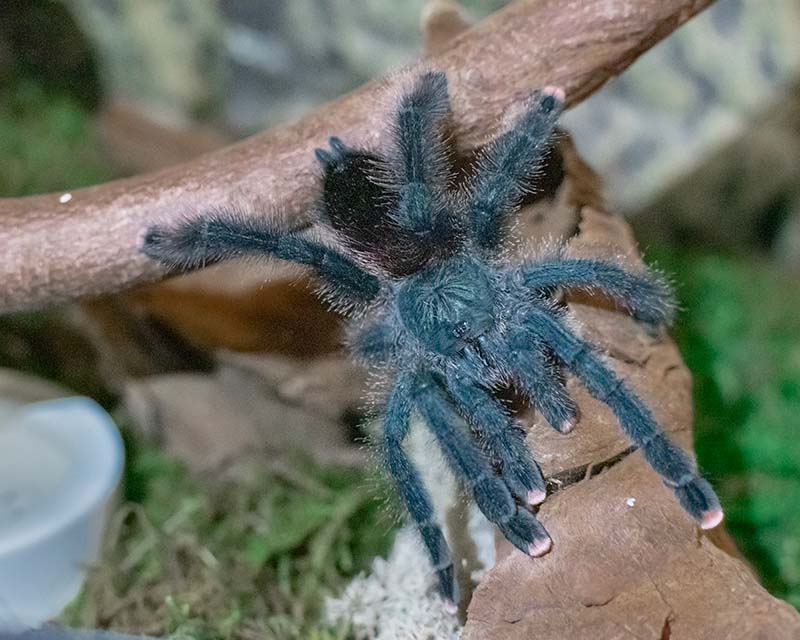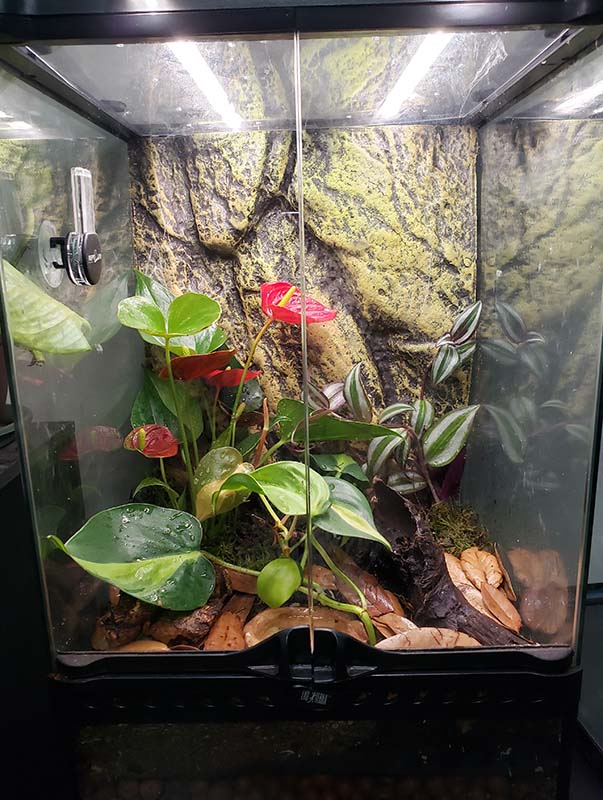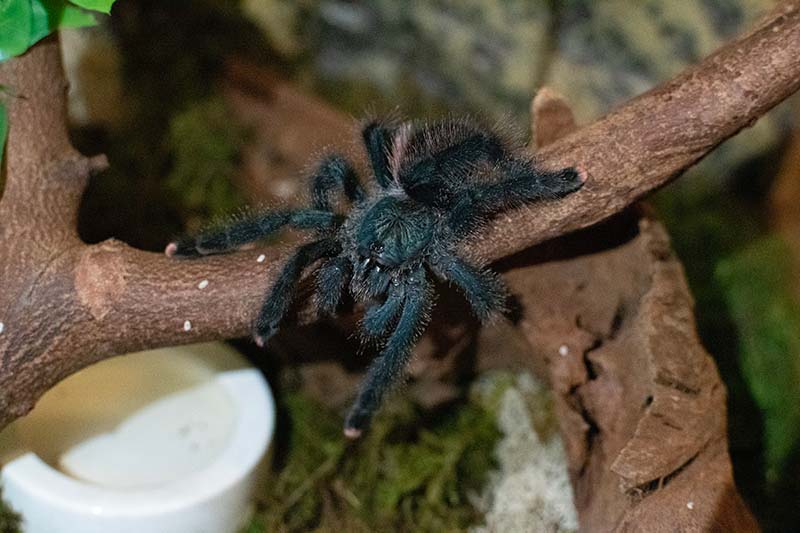Complete Care Guide to Pink Toe Tarantulas
January 31, 2023

Table Of Contents
- Pink Toe Tarantula Enclosure
- Pink Toe Tarantula Substrate
- Pink Toe Tarantula Temperature and Humidity
- Pink Toe Tarantula Feeding
- Handling a Pink Toe Tarantula
Caring for a Pink Toe Tarantula
The pink toe tarantula (Avicularia avicularia) is a new world tarantula that is an excellent species for both beginners and advanced keepers. They are readily available both online and at most pet stores. This tarantula is an arboreal species that will spend much of its time on display at the top of the enclosure. Pink toe tarantulas have black bodies, and bright pink toes, hence the name. They have fairly docile temperaments and are rarely known to bite, though they are known for flicking hairs. These hairs cause a mild irritation when flicked at you. They have very mild venom, but should always be kept with caution, because you won’t know if you have an allergy to it until you’ve already been bitten. Pink toe tarantulas grow to have a leg span around 5 - 6 inches, making them a medium sized tarantula. In captivity, they typically live to be between 7 - 12 years old, with females out-living males.
Pink Toe Tarantula Enclosure
Being an arboreal species, pink toe tarantulas require a tall enclosure. Juveniles can be housed in small plastic enclosures, but adults should be provided with a front opening 12 x 12 x 18 enclosure. Front opening doors are essential. This is because the pink toe tarantula will usually build a web towards the top of the enclosure. Opening from the top can not only startle your tarantula, but can also give them an opportunity to escape. Your pink toe tarantula’s enclosure should be filled with plenty of decor such as plants (fake hanging suction cup ones work nicely), branches, and cork bark. You can choose to do live or fake plants. If you’re interested in doing live plants, you should check out my guide to building bioactive enclosures. It’s important to provide your pink toe tarantula with lots of decor to make them feel more secure in their home. The enclosure should also feature a small water dish. Your pink toe’s water dish should be cleaned out often.

It is highly recommended to only keep one pink toe in each enclosure. Some keepers have had success cohabitating them, however it's a dangerous practice that often leads to cannibalism.
Pink Toe Tarantula Substrate
Pink toe tarantulas are arboreal, so they won’t spend a whole lot of time on the ground. Because of this, the substrate you choose can be something as simple as moss, or coconut fiber. Some keepers choose to use organic, pesticide free soil. An inch or two of substrate will suffice, as the pink toe tarantula is not a borrowing species.
Pink Toe Tarantula Temperature and Humidity
One of the most important aspects of keeping a pink toe tarantula is their temperature and humidity. The ideal temperature range for a pink toe tarantula is between 70°F - 85°F. I keep my pink toe tarantula in my reptile room, where the temperature consistently stays in this range. If your home stays between 70 - 85°F, there is no need to add additional heating. If your home is cooler, you can always supplement with an under tank heat mat. Be sure to place this heat mat on a thermostat. A thermostat will regulate the temperature of the heat mat, preventing it from becoming too hot. Pink toe tarantulas do not need any sort of heat lamp. Heat lamps can be dangerous to pink toe tarantulas as the heat is radiating from the top of the enclosure, where the pink toe is going to be spending most of its time, which can cause them to get too hot.
Pink toe tarantulas do best when kept in high humidity ranges. Their ideal humidity range is between 75 - 85%. It is essential to keep your tarantula’s humidity in the proper range to keep them healthy. Mixing water into a substrate such as coconut husk can do wonders for holding in humidity. You can also mist their enclosures, just take caution to not directly spray your pink toe, as it will irritate them. Low humidity can cause improper molts, which can be fatal. Molting is similar to shedding in reptiles. During this process, your pink toe tarantula will flip onto its back and shed its exoskeleton.

Pink Toe Tarantula Feeding
Pink toe tarantulas are insectivores. They readily feed on crickets, dubia roaches, and mealworms, which can usually be found in most pet stores. You should always gut load your insects before feeding your pink toe. You can gut load by offering the insects carrots, fish flakes, and zucchini. Keep in mind, when you feed your insects will transfer directly to your tarantula. Juveniles should be offered food several times a week. You should offer adults food once a week. You can do this by tong feeding, or by shaking a few insects of your choice into the enclosure. Just be sure to remove any uneaten prey after 24 hours. Always give your pink toe tarantula a break from eating several days after molting. Once the exoskeleton has hardened, you can offer food again.
Handling a Pink Toe Tarantula
Handling is not beneficial to your tarantula, only to you. They gain nothing from being handled, and in fact can become stressed from it. If you choose to handle them, some precautions should be taken. Always sit close to the floor. A long fall can prove fatal for pink toe tarantulas, and they can be jumpy, so always keep a close eye on them during handling. Use gentle movements - hand over hand works well.





Sending...